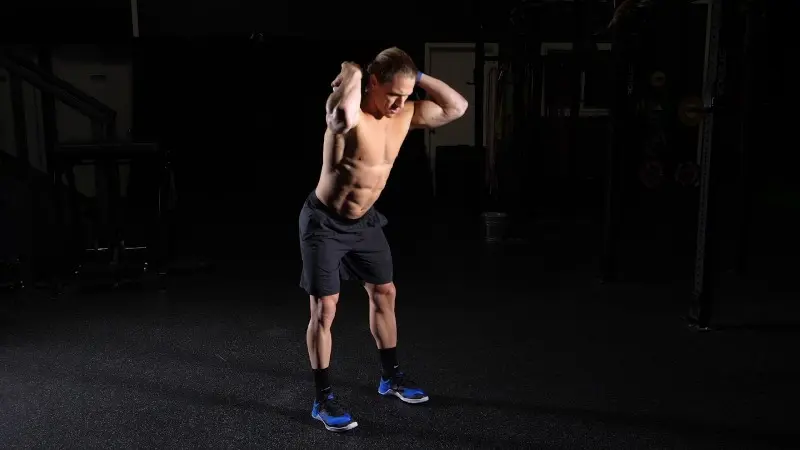
The Good Morning exercise, though not as commonly used or understood as exercises like the squat or the bench press, is an extremely powerful and beneficial exercise when done correctly. It derives its quirky name from the bowing motion that you make which resembles the action of getting out of bed and stretching in the morning.
It is an excellent posterior chain exercise that targets the lower back, glutes, and hamstrings. This article will provide an in-depth examination of the Good Morning exercise, detailing its benefits, proper form, and various modifications for all fitness levels.
The Basics of Good Morning Exercise
The Good Morning exercise is a hinge-type movement that primarily targets the muscles in the posterior chain. The posterior chain refers to the group of muscles that run along the back of your body, including the hamstrings, glutes, and lower back muscles. It’s a barbell exercise, meaning you’ll need a barbell and some weight plates to perform it, although variations can be performed with bodyweight, dumbbells, or resistance bands.
The Benefits of Good Morning Exercise
The Good Morning exercise offers a plethora of benefits when performed correctly. Here are some of the key benefits:
1. Strengthening the Posterior Chain
The primary benefit of the Good Morning exercise is the strengthening of the posterior chain. This is essential for maintaining balance in the body’s muscle development. Many traditional workouts over-emphasize the anterior (front) muscles, which can lead to an imbalance and potential injuries.
2. Enhancing Athletic Performance
By strengthening your hamstrings, glutes, and lower back, Good Mornings can enhance athletic performance. These muscles are essential for sprinting, jumping, and many other athletic movements.
3. Improving Posture
Good Mornings can help correct anterior pelvic tilt and improve overall posture. This is because they strengthen the lower back and hamstring muscles, both of which are key to maintaining proper spinal alignment.
4. Increasing Flexibility
Good Mornings can increase hamstring flexibility, which is beneficial for a range of physical activities and can help prevent injuries.
Performing Good Morning Exercise Correctly
Step-by-step guide:
- Begin with the barbell on your upper-back. Stand tall with your feet hip-width apart.
- Initiate the movement by hinging at your hips, pushing them backward while keeping a slight bend in your knees. Ensure that your back remains flat and neutral.
- Descend your upper body until you reach a comfortable range dictated by your flexibility. You should experience a noticeable stretch in your hamstrings.
- Engage your glutes and hamstrings to propel your hips forward and resume the upright stance. Maintain a tight core throughout the entire motion.
Keep in mind that proper technique takes precedence over the weight lifted. Avoid compromising your form for the sake of heavier loads. The focus should always be on targeting your hamstrings and glutes, rather than straining your lower back.
Variations and Modifications
If you find the traditional barbell Good Morning too challenging, or if you’re looking for ways to diversify your workouts, consider these variations:
- Banded Good Mornings: Using a resistance band instead of a barbell can make the exercise more accessible for beginners.
- Seated Good Mornings: By sitting on a bench, you can isolate the lower back more and reduce the involvement of the hamstrings.
- Single-leg Good Mornings: This version can help identify and correct strength imbalances between your legs.
- Bodyweight Good Mornings: This is a great option for beginners or for those looking for a low-impact version of the exercise.
Conclusion
The Good Morning exercise is a valuable addition to any training program due to its ability to effectively target the posterior chain. It offers a range of benefits from enhancing athletic performance to improving posture and increasing flexibility. With careful attention to form, and by choosing the appropriate variation, this exercise can serve as a powerful tool in anyone’s fitness arsenal. Remember, it’s always a good idea to consult with a fitness professional when trying a new exercise to ensure that you are doing it safely and effectively.


